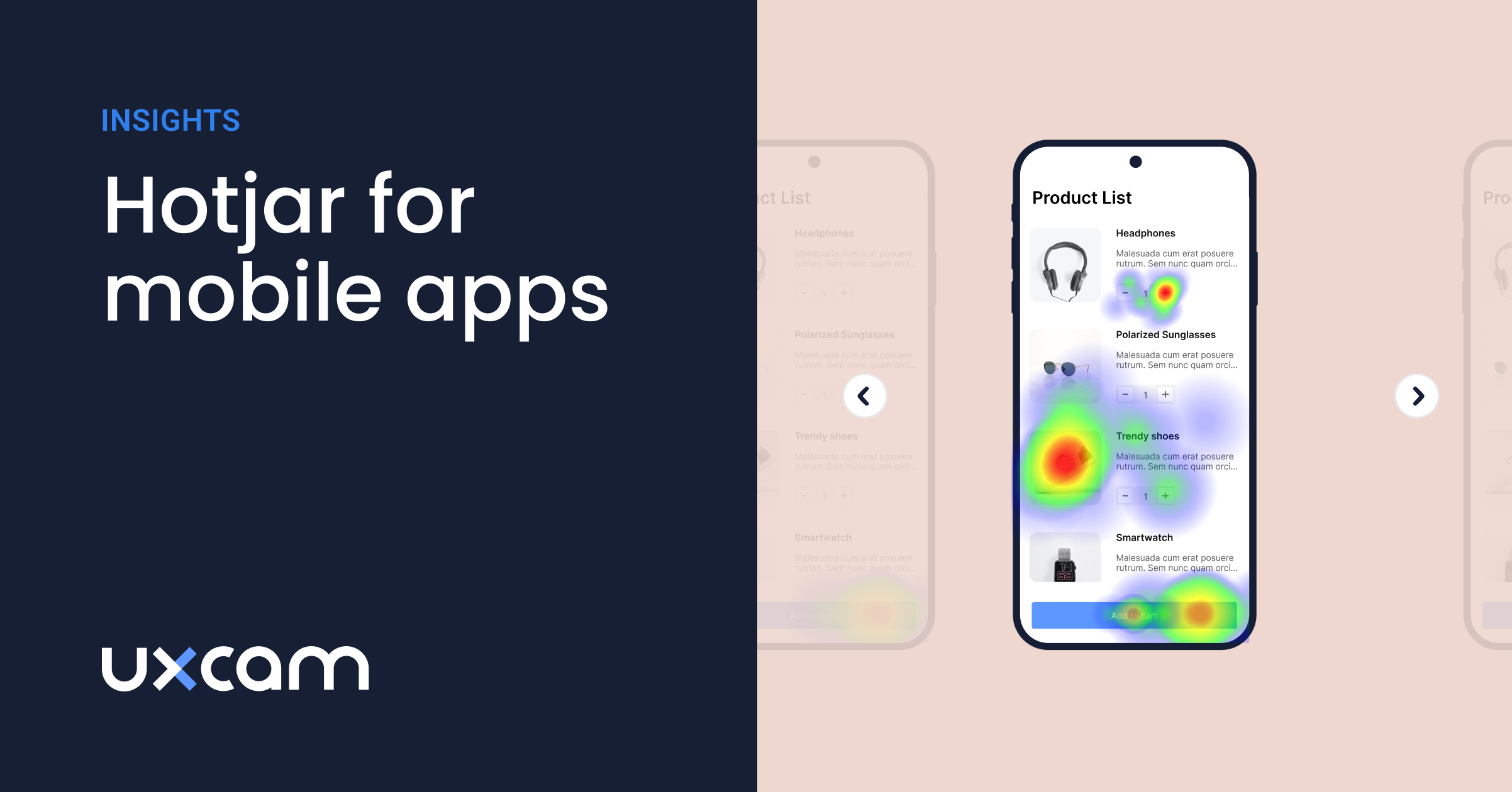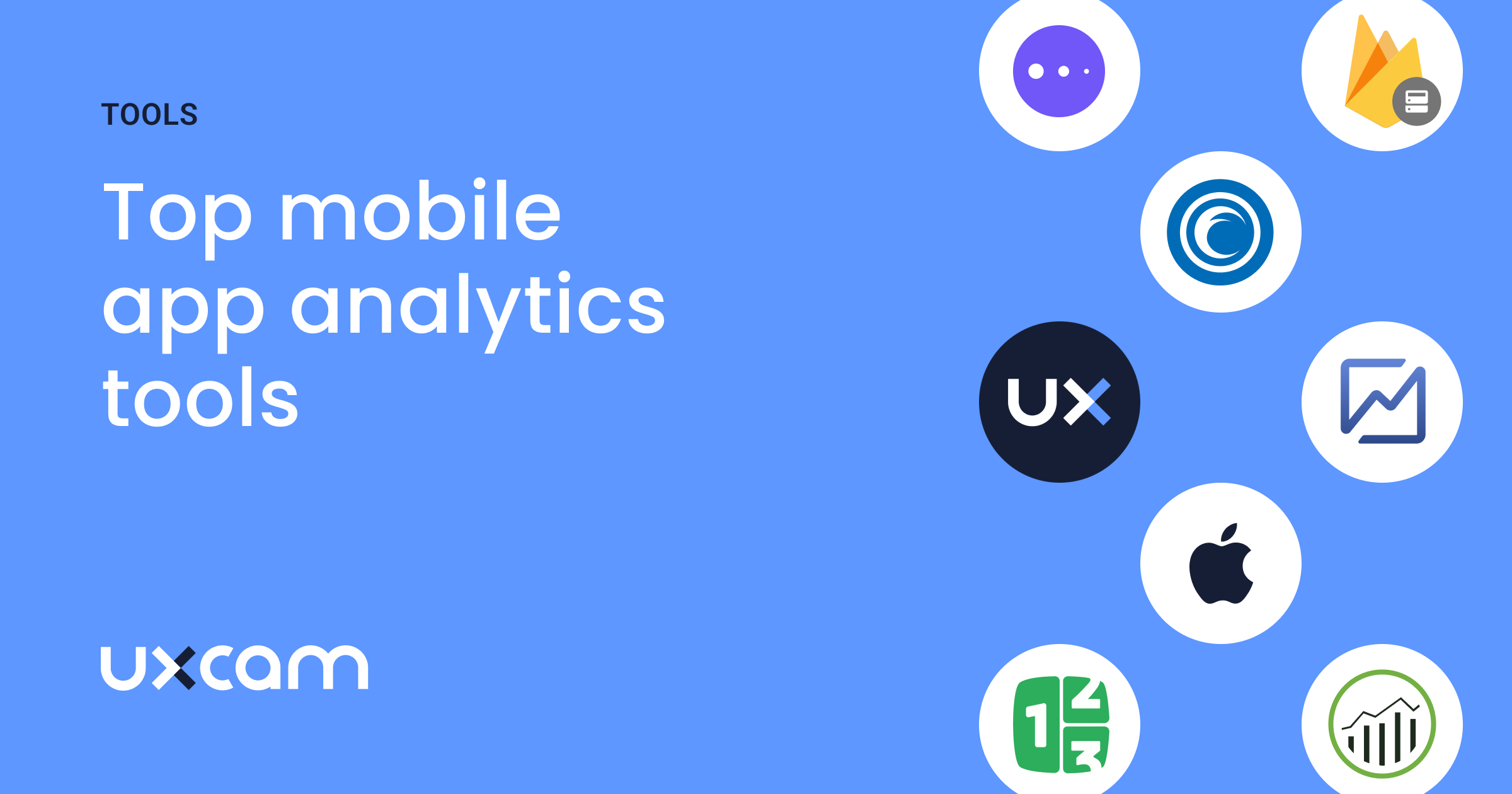Mobile App Tracking: Practical Guide & Best Tools [2025]
PUBLISHED
7 November, 2024

Growth Lead
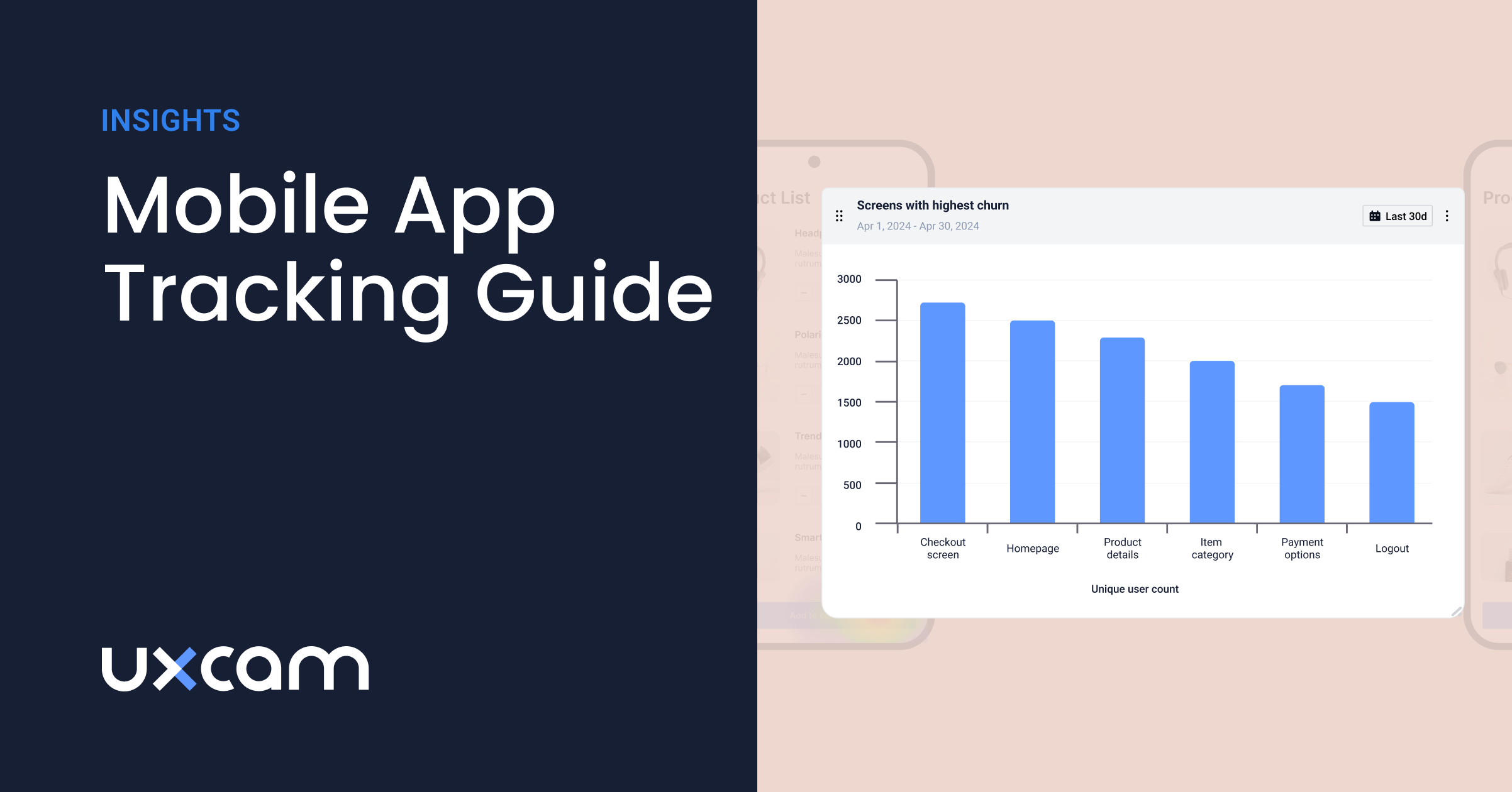
If you’re reading this, you’re here because you need to get a better understanding of how users interact with your app.
This article will take you through the mobile app tracking process from start to finish, the best practices for mobile application tracking, and the best mobile app tracking tools to do so.
Quick Summary
Here are answers to the most frequently asked questions about mobile app tracking:
| Question | Answer |
|---|---|
| What's the most popular tool for mobile app tracking? | UXCam, installed in over 37,000 apps. |
| How does mobile app tracking work? | A tracking SDK collects interaction data and sends it to your analytics solution. |
| How do I set up mobile app tracking? | Install an SDK of an analytics provider like UXCam. |
| Does mobile app tracking impact the performance of my app? | Depends on your SDK, UXCam's SDK uses between 50k and 500kb of bandwidth per minute, and adds no overhead to your app performance. |
| How do I ensure privacy when tracking my mobile app? | Ensure that your analytics provider has security certifications like SOC 2. |
What is Mobile App Tracking?
Mobile app tracking captures data in an app to uncover insights for improving user experience.
Mobile user tracking is made possible by using a mobile analytics platform which typically records different types of user data, including but not limited to:
| User Information | Session information |
|---|---|
| Location | Session ID |
| Device information (mobile device, operating system) | Screen views |
| User ID | Gestures |
| Session replay | |
| Heatmaps | |
| Custom events |
It’s important to note that mobile app tracking is especially useful when it comes to user behavior analysis.
Tip: Solutions such as UXCam automatically capture micro-interaction data sets. This means that every gesture and every action can be easily analyzed.
How does Mobile App Tracking work?
When getting started with mobile user behavior tracking, you need an app analytics solution that serves as a data processor. You have to integrate the SDK (Software Development Kit) of the mobile app analytics solution into your mobile app.
This mobile app tracking SDK collects user interaction data and sends it into your mobile app analytics solution, where it will be processed and converted into insights on a dashboard for your product team.
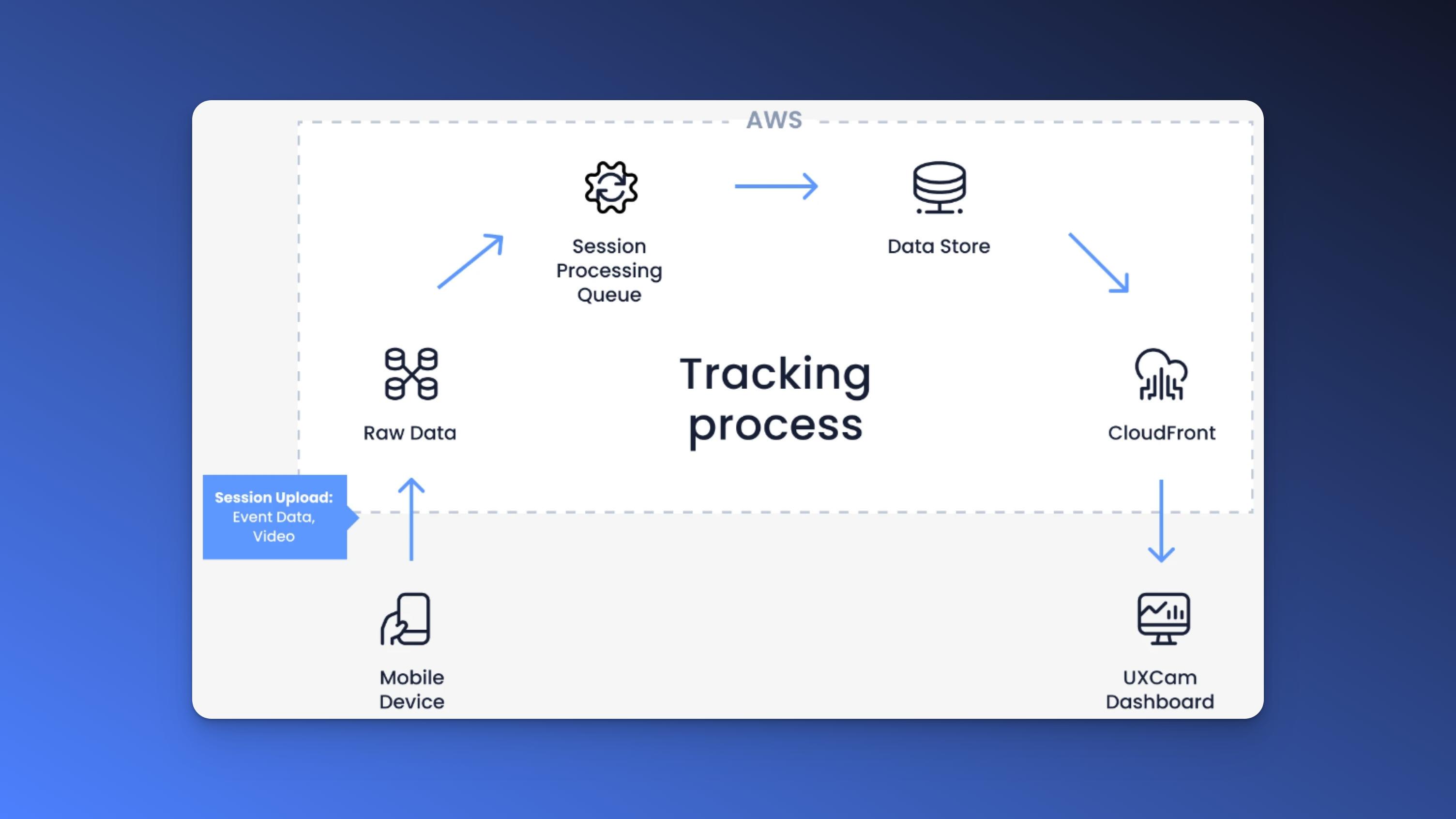
It is important to know that your choice of SDK could make or break your mobile app. App performance issues are often directly caused by the SDKs you put in your app.
It’s critical to choose a low-risk and high-performance SDK because it has a direct impact on the end user’s experience of your app. A high-risk, poor-performing SDK can result in:
Slowing down your app
Bugs on the app
More crashes
Reduced functionality
This can lead to user churn and poor app reviews. If the SDK you’re using doesn’t follow the app store rules, your app could be removed from the app store.
Ultimately, a low-risk, high-performance SDK will positively impact your business metrics like user retention, acquisition, and revenue.
Why is Mobile App Tracking Important?

Mobile app tracking helps you to understand how users behave and interact with different elements in your app.
It helps you make better design decisions with data-driven answers to important questions about what exactly users are doing in your app.
Which feature of your app is the most popular?
What do users like or dislike?
Are there any static elements that appear clickable?
Where and why do the users leave your app?
These questions and more are important for the future success of your mobile app.
When a user does something in our mobile app (for example, clicks a button), it is captured and recorded in your mobile analytics tool.
You will be able to see things like the user “clicked the signup button” five days ago and “canceled account” two hours ago. These events, when viewed on a timeline, will show a very clear behavioral pattern that you can analyze to extract valuable insight into the user journey and uncover points of friction experienced by your app users.
Mobile app tracking becomes incredibly valuable because it delivers useful insights to prioritize your product roadmap and proactively ship relevant features that best meet the needs of your users.
How to Track User Activity and Behavior in Mobile Apps
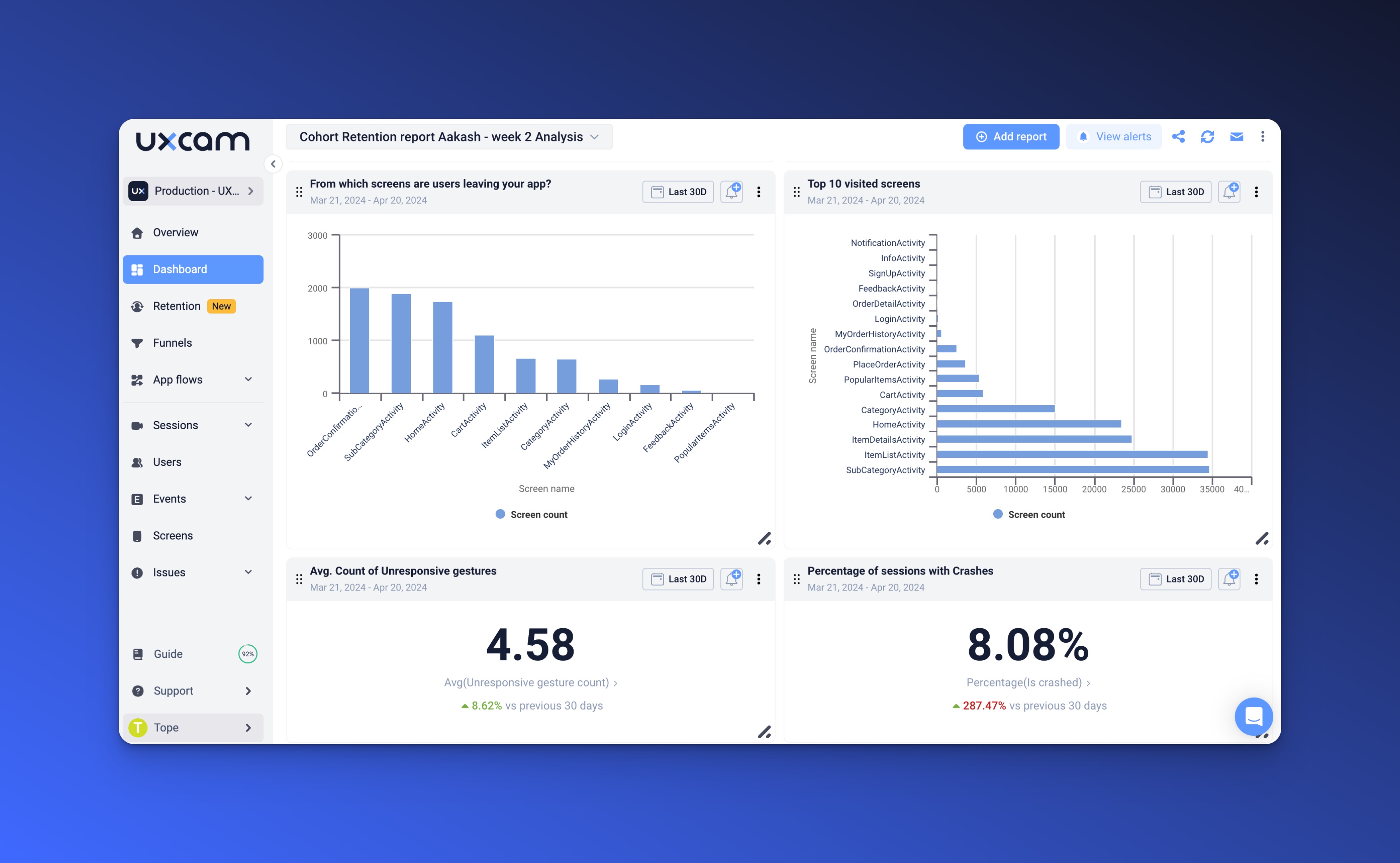
Before you start setting up tracking on your mobile app to gain insights into your user's behavior, you first need to understand what to track, when, and why. It’s easy to conclude that you need to track every little detail, however, that’s not always necessary.
Tracking is only as good as when the purpose behind it is well-informed. Outlined below are practical steps to set up effective user tracking in your mobile app.
Define your goals and key metrics
Defining SMART goals that you want to achieve for your product will help you identify the key metrics you should track to measure the success of your app.
Having clear goals helps determine what user event or properties you should send to your mobile app analytics tools to gather valuable insights and measure these objectives.
A good starting point is having an honest conversation with your team and yourself to figure out what questions about your users you are seeking data-driven answers for.
For example, let's assume you manage a cinema app; you may wonder how many users bought a ticket to watch a movie and why users aren't adding extras (popcorn or drinks) to their purchase.
Based on these questions, you could define the following goals for your app:
Increase customer retention by 30%
Discover what the key features are that have a higher impact on retention
Understand the difference in the user journey between one-time and returning users
Analyze the user experience and uncover friction points and roadblocks in the customer journey to improve your product
Then, these goals would determine why you should be tracking the following key metrics below:
Number of Active users (Daily, Weekly, and Monthly)
Most commonly used features among returning users
Screen exit rates
Drop-off percentage for the purchase process
Percentage of rage taps
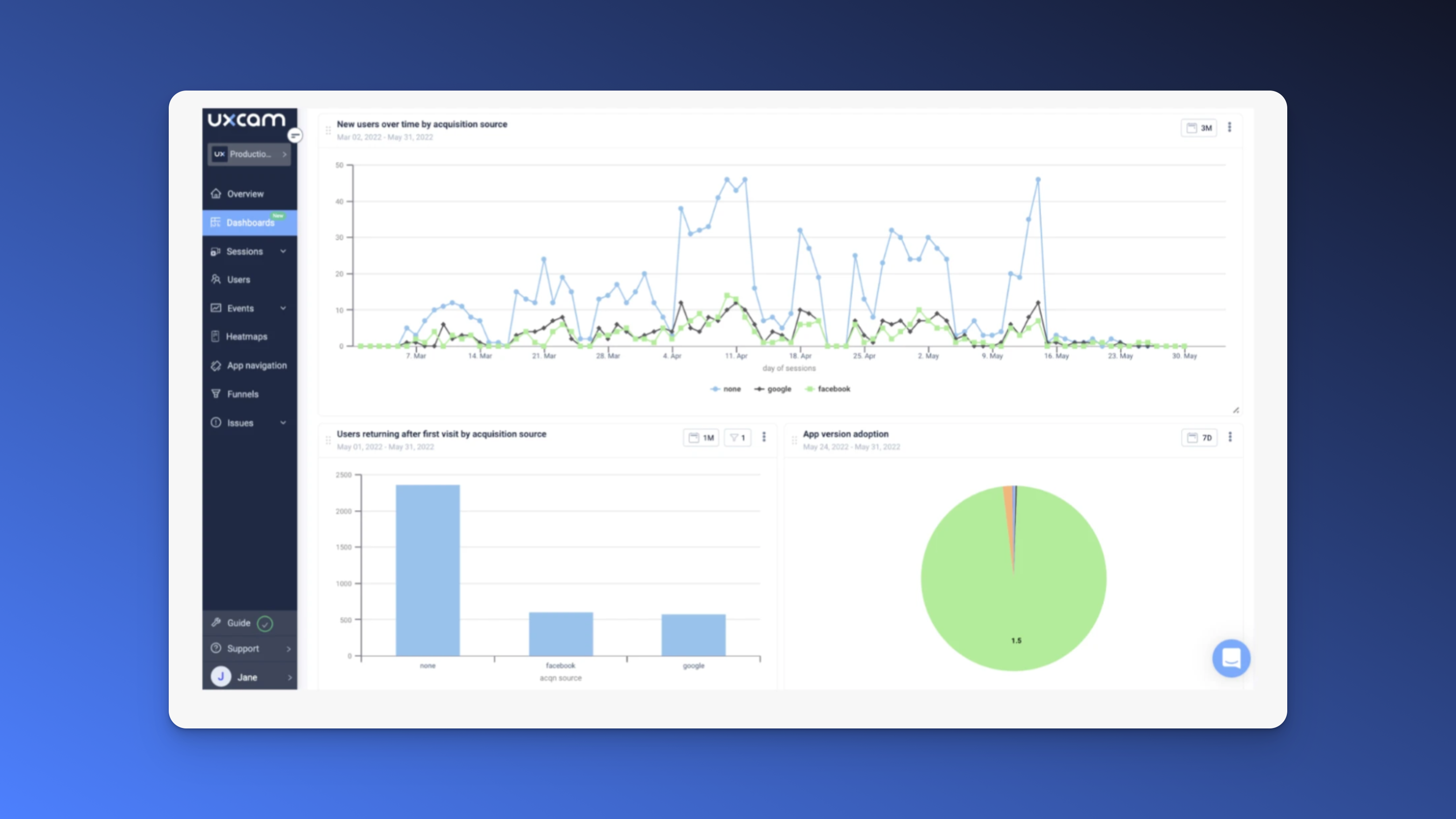
Plan your events and properties
To gain better insights into your users’ interactions with your application, you have to send the right events and properties to your app analytics platform. An event can indicate any interaction that occurs between the user and your application. It can be an action that the user performs (e.g., tapping a button, swiping between screens) or a specific event (e.g., an error message displayed).
While a property is an attachment to an event that provides additional context and allows you to dig deeper into the interaction.
Using the example of the cinema app, you may have the event "add to cart". This event can have the properties: movie name, movie category, movie time, selected theater, ticket price, and the number of tickets.
Planning your mobile app event tracking and aligning them with your goals and metrics will help identify the most important events with properties to send to your analytics tool.
Your choice of mobile app tracking tool could help speed up and organize the process. For example, a mobile app analytics solution like UXCam automatically detects;
Screens visited
Gestures of the user (taps, double taps, swipes, etc)
Rage taps: to show user frustration
UI Freezes: when the screen freezes
Map your user's journey with screen flow and screen burst
With the proper tracking setup and user behavior data flowing to your analytics tool, screen flow and screen burst map your user's journey and help you visualize at a glance the most common paths your users take when using your app. You can use this functionality to:
Identify differences in the navigation behavior between user segments
Discover alternative paths that users follow to achieve a certain goal in your app
Analyze sessions from users navigating through a sequence of screens
See how users behave with session recordings and replay
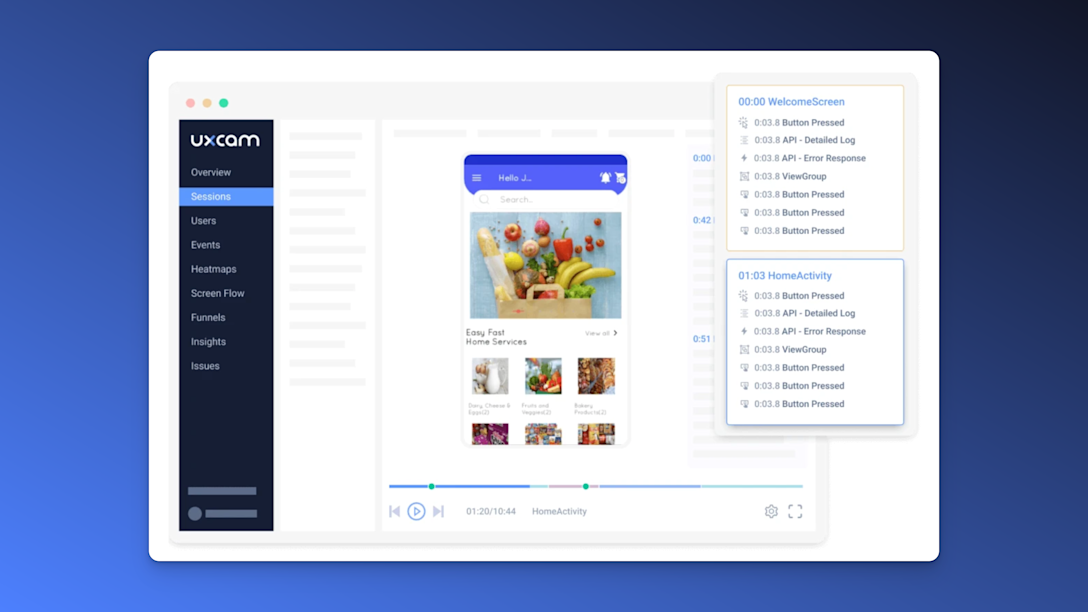
Mobile app session recording and replay give direct insights into your users’ behavior. This includes every interaction with the app, user input, and screen output.
It allows you to combine qualitative insights from session replays with quantitative insights from the events and properties you are tracking to understand the entire context behind every user interaction.
Session recording helps you see how your users interact with your app in a real-life scenario and visualize how your app looks on different devices, making it easy to know whether or not your app displays and functions correctly. You can use session replays to;
Identify bugs and user frustration patterns and reproduce them
Analyze your users’ journey and how they navigate through your app to improve user onboarding
Focus on what matters by filtering your sessions based on length, triggered events, rage taps, crashes, UI freezes, and other properties
Track where users click and scroll with touch heatmaps
The easiest way to track and visualize where users click, tap, and scroll on different screens in your mobile app is to use touch heatmaps — a visual overlay in an array of colors to represent user interactions.
Touch heatmaps allow you to see what your users are doing and how they interact with each screen in your mobile app. You can use mobile heatmap analytics to;
Find the most visited screens or those with greater user interaction or engagement
Discover the screens with the highest percentage of UI freezes and crashes
Spot the screens with the highest quit rate, and watch the session replays to understand the reasons behind those metrics
Easily identify screens that cause users the most frustration by sorting them by rage taps count or unresponsive gestures. Then, visualize those frustrations with the screen recordings

How to track mobile app analytics
There are many tools that you can use to track your mobile app analytics. These mobile app analytics tools can be broadly into two categories;
Using built-in analytics tools: Mobile app development platforms, such as Apple's iOS and Google's Android, have built-in analytics tools that can be used to track basic usage data.
Using third-party analytics tools: Many third-party mobile analytics tools can be integrated into your app to track detailed app usage data using a software development kit.
Next, we'll review the top three recommended mobile app tracking tools.
Best mobile app tracking tools
We searched for the best app tracking tools, and this is our selection of the best three solutions.
UXCam

| G2 Rating | Platform | Price |
|---|---|---|
| 4.7/5 | iOS / Android / React Native / Flutter / .NET | Free Trial / Pricing Upon Request |
UXCam is the leading in-app analytics solution that combines both quantitative and qualitative analytics. It gives you a deep understanding of user behavior and helps to improve your app’s KPIs.
While serving 37,000 apps, including Nissan, NBC, and Vodafone is a big feat, the true power of UXCam is the ability to give you the complete context of your app and your users.
Essentially, by giving you a 360-degree view of your app, UXCam gives you access to data-informed decision-making. UXCam enables you to easily understand the complete user journey, uncover user struggles automatically, and find opportunities on each screen.
You can use Heatmaps and Screen Flow to find hidden bottlenecks and understand where users drop off to increase conversions.
Customers of UXCam say that "UXCam is the core tool to build their product".
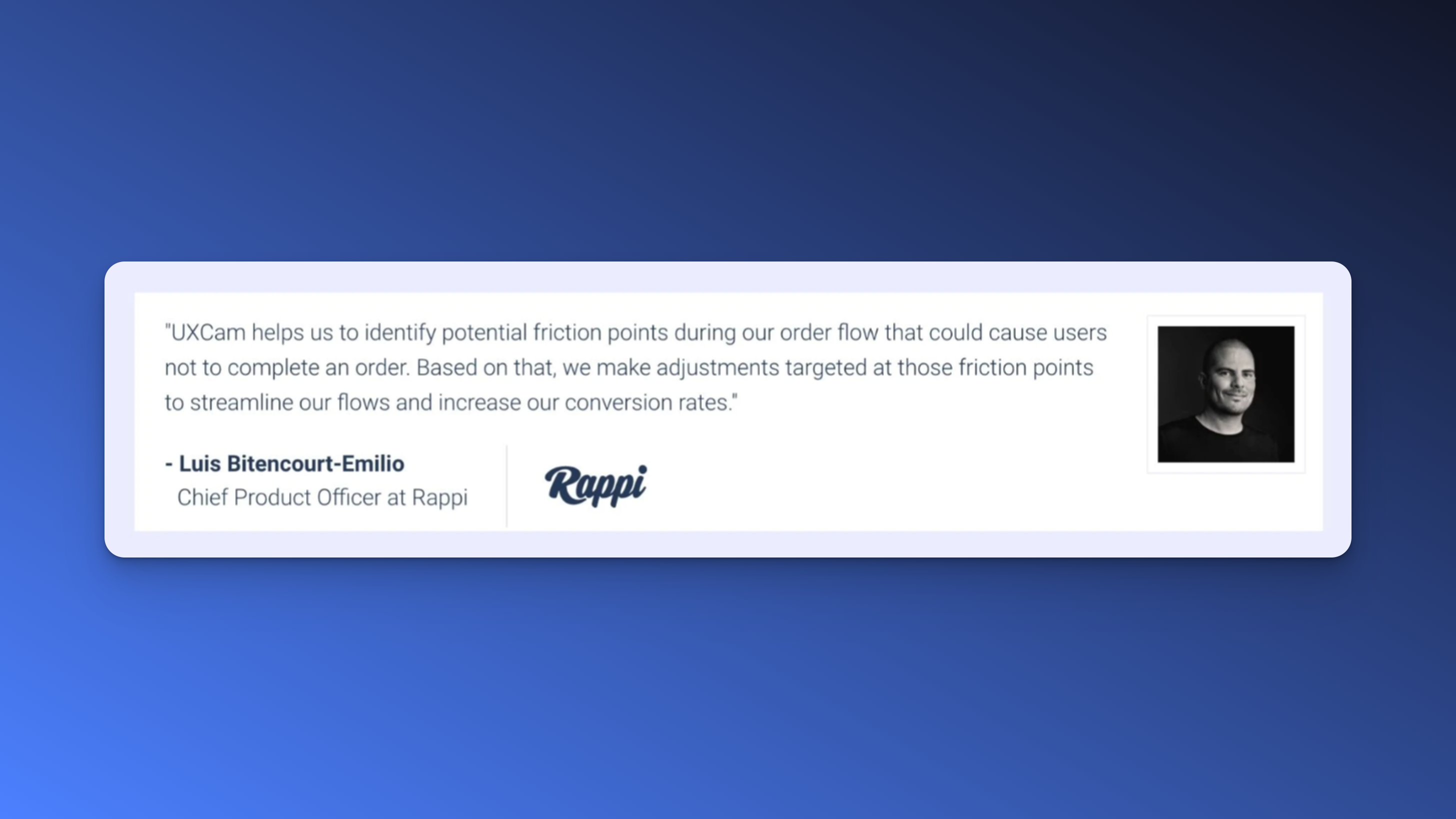
CleverTap
CleverTap is a user engagement tool for mobile apps that offers extensive user insights, robust segmentation, and personalized outreach.
With CleverTap, you can retain users with personalized push notifications and better understand their decisions. You can also trace user uninstalls.
Firebase
Firebase Analytics (now called Google Analytics for Firebase) provides automatic tracking of user demographics, behavior, and interactions across your mobile app or website, including custom events, user properties, and conversion tracking.
It offers real-time reporting, audience segmentation, user flow visualization, and seamless integration with other Firebase services to help you understand user engagement, retention, and app performance.
Conclusion
Mobile app tracking is one of the most important parts of managing a mobile app. It can make the difference between shifting your app in the wrong or right direction.
Reach out for a free demo to learn more about how you can use UXCam for your mobile app tracking.
Related Articles
Top 11 Analytics Mobile App Analytics Tools
How to measure, analyze, and reduce app churn
Android Analytics: Top 8 Tools
4 Key Points That Matter When Comparing Mobile Analytics
The Ultimate Guide to Mobile App KPIs
11 Essential Mobile SDKs That Will Improve Your App
The Hotjar for Mobile Apps: UXCam
AUTHOR

Jonas Kurzweg
Growth Lead
UX, marketing & product nerd. Coffee enthusiast. Working at UXCam.
What’s UXCam?
Related articles
App Analytics
The Hotjar for mobile apps: UXCam
Read on to learn about the best Hotjar alternative for native mobile apps (Android and iOS) and hybrid apps. Here's how to get heatmaps and session recordings for your mobile...

Audrey Meissner
App Analytics
Top 19 Mobile App Analytics Tools in 2025
Choosing the best mobile app analytics tools and platforms for your app can be overwhelming. We did the research, so you don't have...

Jonas Kurzweg
Growth Lead
App Analytics
Amplitude React Native Integration Review & Best Alternative
Explore how to set up Amplitude React Native, read expert reviews, and discover the best alternatives for optimizing your mobile...

Tope Longe
Growth Marketing Manager
